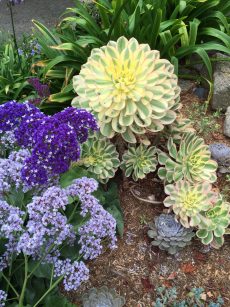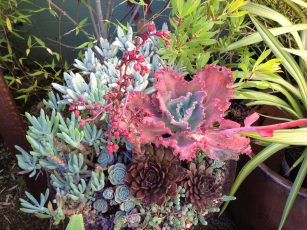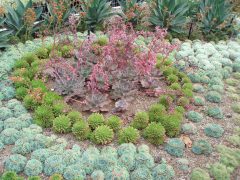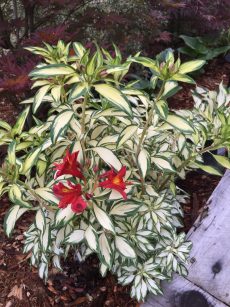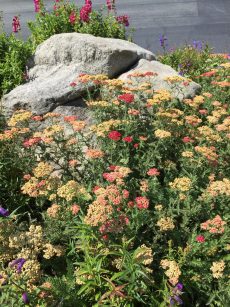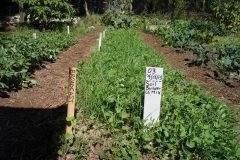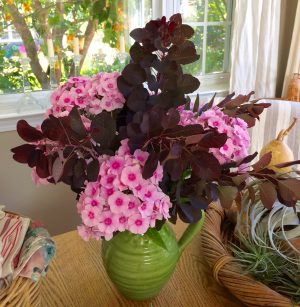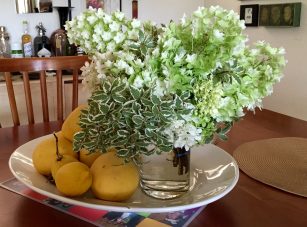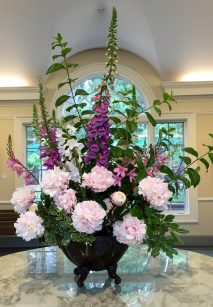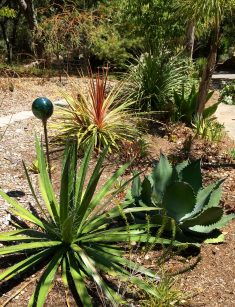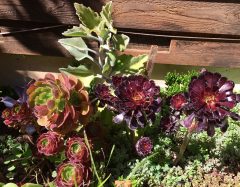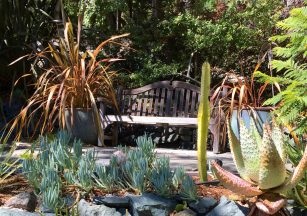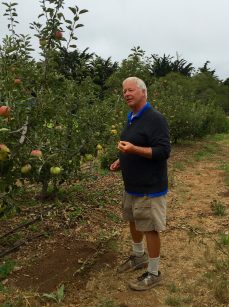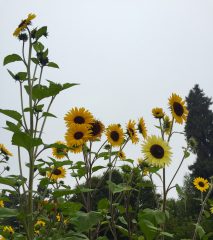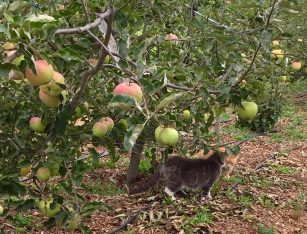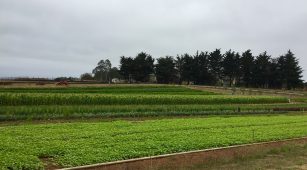I lucked out the other day when I was invited on the spur of the moment to visit a garden in Felton. I was at her daughters house to help with some design ideas for the backyard when the offer came that maybe I would like to see how her no mow-no water carex pansa lawn was doing at the end of the summer. Would I? I jumped at the chance.
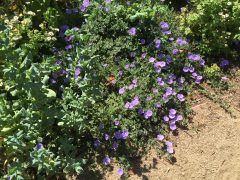
Located only a couple blocks away, Michele Mosher?s garden was a real treat to visit. You can tell in an instant a garden that has been created and nurtured by a plant lover. It was truly a work of art. Each path wound between beds with just the perfect mix of shrubs and perennials. Chocolate cosmos bloomed alongside sedum ?Autumn Joy? and caught my eye right away. Blue ground morning glory, honey bush, salvia guaranitica starred in some beds. She told me she hasn?t watered the lamb?s ears, phormium, lavender, ceanothus, rosemary and salvia ?Bee?s Bliss? this summer.
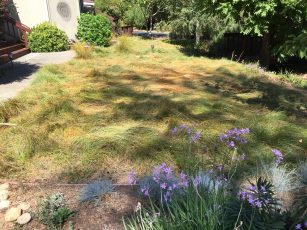
On the far side of Michele?s carex pansa meadow she grows a border or society garlic and blue fescue grass. She has not watered her meadow at all this year. Although browning in spots now it didn?t look bad at all. She told me that she did mow occasionally while it was becoming established in order make it thicker but prefers the meadow look. Also weed control at first was important but now she does virtually no weeding at all. Michele planted her carex pansa lawn from plugs.
Native turf grasses can work as a play surface for children mowed at two to three inches high. If allowed to grow naturally, the clumpy, meadow-like nature of this type of turf would be a tripping hazard for most play activities.
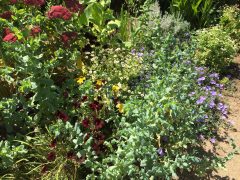
Lawns like carex pansa and other no-mow native grasses such as blue grama, California and red fescue and bent grass don’t need constant mowing to stay short. A handfull of trims per year, depending on the site, will suffice. Carex pansa forms a 6-8″ high mat of narrow, dark green leaves that are moderately tolerant of foot traffic and excellent between pavers and stepping stones. Occasional shearing keeps it looking it’s best but can be left alone with no mowing at all. This grass only needs an occasional irrigation to keep it green.
Other meadow grasses to walk on include buffalo grass, catlin sedge, carex texensis, Berkeley sedge and valley meadow sedge. All grow 4-8″ tall and can be either left alone on mowed every so often. They are tough enough for soccer games yet soft enough for bare feet.
If you’ve decided that you don’t need a traditional grass lawn anymore at all, replace it with a sustainable alternative like Michele did to save water and time.

